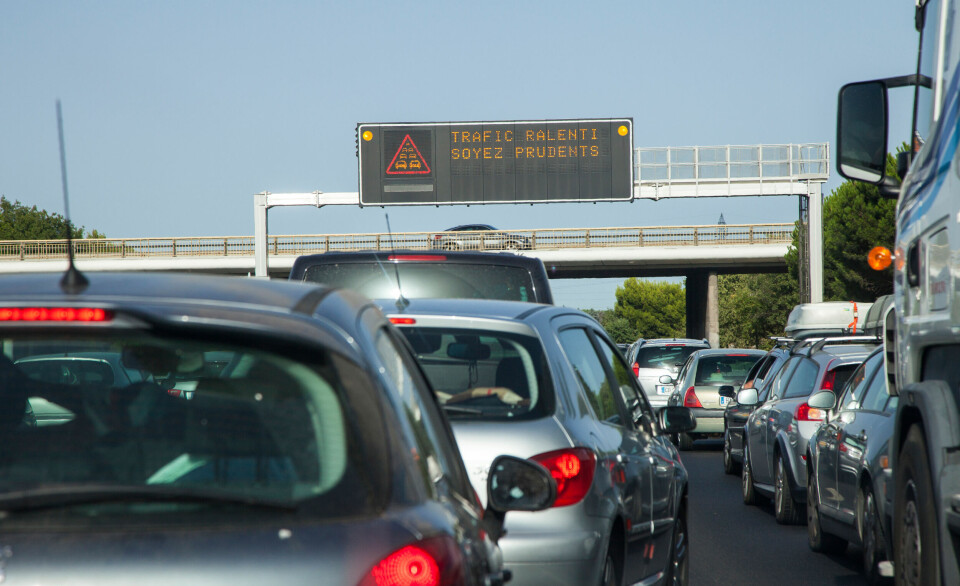-
SFR customers in France warned to be vigilant following cyberattack
Data from potentially millions of customers were taken following data breach
-
Festive travel reminder for residency card holders as new border checks expand in France
The EU’s Entry/Exit System is being rolled out progressively
-
Road blockades by farmers continue on Monday despite call for Christmas truce
A meeting between local union leaders and officials in Toulouse will determine pre-Christmas blockades
See Thomas Pesquet’s great photos from space
Astronaut has shown some stunning views of France - this is Béziers and the Canal du Midi - and the rest of the world as he orbits Earth every 90 minutes

French astronaut Thomas Pesquet is a little over three months into his six-month tour on the International Space Station and has been sending back some spectacular photographs of the Earth, and especially France, from space.
Thomas, the 10th French person in space, took off from the Baikonur cosmodrome in Kazakhstan on November 17 with colleagues NASA astronaut Peggy Whitson and Roscosmos commander Oleg Novitsky.
Twitter users have been treated to some fabulous photos which Thomas takes from the Cupola observation capsule on the spacecraft – once including Paris in the background to a shot of Soyuz and Progress shuttles docked on the ISS.
He even managed to grab a photo of Dieppe, the town where he grew up… and pointed out his lycée on the cliffs.
Since arriving on the ISS, Thomas has felt some of the effects of living without gravity – his spine has grown longer – but he has also been able to take part in a spacewalk and is involved in today’s rescheduled docking of the Space-X Dragon, the space shuttle that Tesla inventor Elon Musk is promoting.
Stay informed:
Sign up to our free weekly e-newsletter
Subscribe to access all our online articles and receive our printed monthly newspaper The Connexion at your home. News analysis, features and practical help for English-speakers in France
The shuttle carries vital supplies for the ISS crew and Thomas will be part of the team aiming to ‘catch’ it with the ISS robotic arm so it can dock.
You find out Thomas’ daily routine on his blog at http://blogs.esa.int/thomas-pesquet/2017/01/16/weightlessness-work-sleep-the-routine-of-an-astronaut/ and note that this week he and his fellow crewmates have been enjoying fresh lettuce for lunch, after it was grown as part of an experiment by Peggy Whitson.
And you can watch the ISS pass overhead at nightfall or dawn by checking the NASA tracker website - or downloading an app for your smartphone which will give directions and where to look.
La Rochelle connects Ile de Ré to mainland #France and is a beautiful port city to visit. #Proxima https://t.co/HQDBEhZMD2 pic.twitter.com/y75fAQ0tnM
— Thomas Pesquet (@Thom_astro) February 18, 2017
Cannes, where I used to work at @Thales_Alenia_S – good times! https://t.co/JOaayu6E8V #Proxima pic.twitter.com/utCjkBx18J
— Thomas Pesquet (@Thom_astro) February 15, 2017
Looking down at Earth's features, I often forget that looking sideways is equally impressive! 🌏 https://t.co/PnlyGUjzam #Proxima pic.twitter.com/8xlB5Do3T7
— Thomas Pesquet (@Thom_astro) February 12, 2017
#Paris at night. I might be biased, but it’s the most beautiful thing I’ve seen yet (picture by friend & #Soyuz commander Oleg Novitsky) pic.twitter.com/bfb3OjN0na
— Thomas Pesquet (@Thom_astro) February 11, 2017
Le Havre, the harbour to Normandy and @UNESCO site. https://t.co/OSyw2sN4sM #Proxima #LeHavre #Normandie pic.twitter.com/JCKPcDPvJV
— Thomas Pesquet (@Thom_astro) February 11, 2017
Saint-Jean-de-Luz and its characteristic seashell-shaped bay. #France #Proxima https://t.co/4YoiJfWHXC pic.twitter.com/tyxUEjjMaf
— Thomas Pesquet (@Thom_astro) February 8, 2017
Nice is nestled between the Mediterranean & the foothills of the maritime Alps: even at night you can make out its geography! #Nissalabella pic.twitter.com/LibvGIS9mQ
— Thomas Pesquet (@Thom_astro) February 3, 2017
#Dieppe, la ville où j’ai grandi! La voir depuis l’espace m’évoque beaucoup de bons souvenirs (mon lycée est visible sur les falaises!) ❤️️ pic.twitter.com/vg7C9rA9yq
— Thomas Pesquet (@Thom_astro) January 15, 2017
























